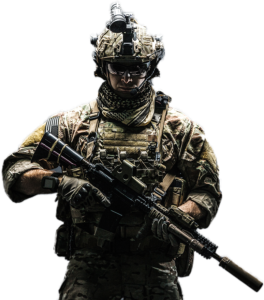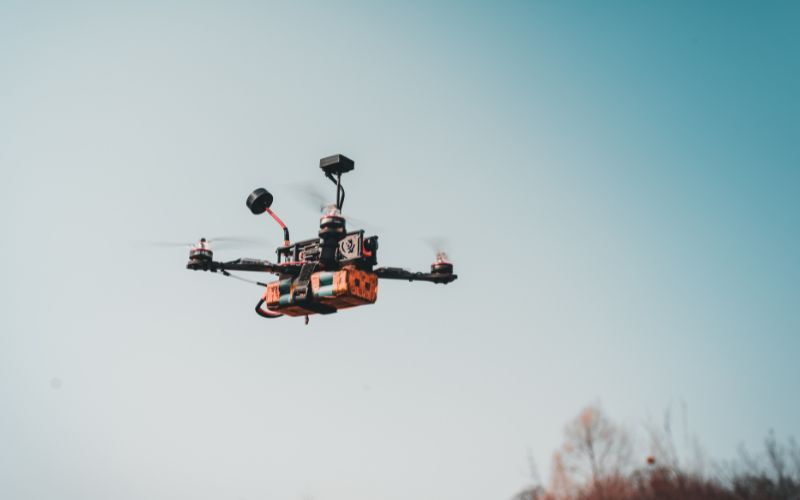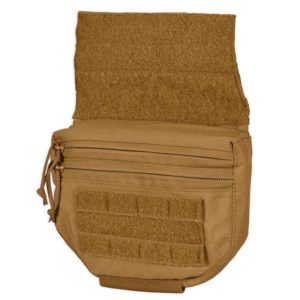Top Emergency Communication Methods for Military Success

Effective communication in high-stakes environments like military operations relates to success or failure. A mission’s execution with clear and dependable communication will allow troops to coordinate well, react appropriately in crises, and minimize casualties in combat situations. In any scenario, from high-intensity combat to disaster relief, the transmission of information securely and reliably is vital to emergency management skills.
From radios to advanced satellite communication, the military has different technologies that are essential tools for agencies, organizations, and frontline individuals who aim for easy access during emergency activities. This blog will discuss the primary emergency communication methods military personnel use, the most basic types of tactical gear required to ensure effective communication, and the training soldiers receive to respond effectively in emergencies.
Historical Background Of Military Communications
Military communication has become highly advanced over time. The early methods depended on visual communications, like flags and smoke, and were limited to distance and environmental conditions. The invention of the telegraph in the 19th century revolutionized communication, as messages were quickly transferred across long distances during the American Civil War. Moving toward the 20th century, right survival radios allowed almost real-time battlefield communication.
Encrypted communication was introduced during World War II, heightening safety and security. In today’s digital era, military services leverage mobile tech, emails, and text messaging with secure satellite integration to support global missions and crisis response.
1. Radio Communication
The most apparent means of communication in the military is through two-way radios. The radios are designed to be rugged in military conditions so that troops can continue communicating during worse weather, earthquake events, fire battles, or heavily wooded or mountainous terrain. Real-time and direct team communication enables them to coordinate in rapidly changing situations.
Some military officers wear their radios in a radio pouch attached to their backpacks, bug-out bags, or tactical vests so that they may operate them quickly during operations. Radios’ primary advantage in emergency communication is their simplicity and reliability. In disaster zones or enemy territory, this type of communication can mean the difference between action and delayed response.
2. Satellite Communication (SATCOM)
SATCOM is essential for communication in remote areas where radio signals don’t reach. It addresses the issue of long-distance communication. SATCOM provides international satellite coverage, allowing military forces to communicate without being limited by geography. Communication over greater distances is required in the case of military forces like special forces and international operations.
SATCOM is increasingly integrated into tactical equipment, even packs for carrying communications equipment. Soldiers in the field can send critical information back to command centers so that leadership gets an accurate picture of the battlefield or mission area. SATCOM also plays a crucial role in disaster relief missions, where most other means of communication are unavailable because local infrastructure is destroyed. In such events, SATCOM helps coordinate assistance, organize dispatch routes, and protect property and homes from further damage.
3. Field Telephones
Field telephones look archaic and do not compare with most modern methods of communication. Still, they have proved extremely effective in emergency communication, especially where other means of communication break down. Field telephones are wired communication systems that don’t rely on satellite or radio networks. This independence makes them less prone to jamming or hacking through any satellite or radio communication system.
Telephones are maintained between the units at military bases or field camps. This gives the troops safe communication lines. They are a system where soldiers have been trained in mounting and maintaining these systems, especially when other means of communication are disrupted by electronic warfare. Their uses are usually an integral part of other devices meant for communication and are often used as a backup to primary systems whenever they fail.
4. Visual and Audio Signal Communication

The staff will have to use less advanced forms of communication during emergencies where technology is either unavailable or has broken down. These low-tech methods are essential when maintaining radio silence or navigating environments with electronic barriers.
A light may present color-signal smokes, flares, or hand signals and can be heard using whistles or noise-making devices. In extreme danger or stealth operations, every soldier is trained like a professional to identify these signals for interpretation during communication.
Most military training programs emphasized silent and wordless communication in emergencies, especially during operations in infiltrations or rescues, where prompt, silent coordination is necessary.
5. Emergency Beacons and Locator Systems

Another vital form of communication in emergencies is emergency beacons and locators. These gadgets send out distress signals that may allow rescue teams to quickly trace the locations of injured or stranded personnel. These emergency beacons are relatively small; hence, they can be fitted into any soldier’s bug-out bag or fixed to his tactical gear to ensure fast assistance.
These are the thin lines between life and death in danger zones or survival situations, helping to ensure that help can reach personnel in distress. Usually, the emergency beacons are fitted with GPS functionality, meaning location information is accurate and up to date.
6. Communication and Reconnaissance Drones

These drones have become crucial for military communication, drifting away from ordinary uses. They provide aerial surveillance and act like relays to boost signals. In emergencies where angry mobs break the usual lines of communication, an army operates drones equipped with signal relay systems to fly over battlefields or disaster zones to create temporary communication networks.
Drones assist in real-time data collection and notification to ground units. Training military personnel to use drones effectively is also normal, as access to key information and communication would be available even in the most challenging environments.
7. Mobile Apps
Cell phone apps are not only used for playing games and occupying children on long automobile drives; they can also be used during a disaster.
a. Life360
Life360 is a free app that can access a user’s location and contains a messaging service feature. Automatic alerts can inform the user when a loved one arrives or checks in at specified destinations.
b. FEMA app
This application provides users with readiness information such as survival skills, emergency checklists, and meeting points on a cell phone. It also allows users to access National Weather Service weather alerts customized for a specific area. Users can also get information on Disaster Recovery Centers, find locations of the nearest shelters, and apply for relief.
8. Mesh Networks
Mesh networks are decentralized forms of communication that can even be used without cellular or satellite infrastructure. Mesh networks in the military are critical to building a significant web of communication. For example, when network failures or jamming attempts are anticipated, permanent communication is given in such scenarios.
Some mesh devices are an integral part of standard soldier bug-out bags and other tactical equipment, so units may continue to contact even when they get separated from central command or operate in areas where the more conventional forms of communication become interrupted. The utility of these networks is more pronounced when there is urban combat or disaster response in areas where the existing structures may have been destroyed.
Military Emergency Communication Protocol Difficulties
Military Emergency Communication Protocols have limitations that are limited to various challenges that decrease operational effectiveness. First, environmental factors such as rugged terrain and extreme weather conditions cause disruptions in the communication links during emergency operations, thus delaying critical information exchange. In addition, cybersecurity threats pose significant dangers because adversaries use advanced hacking tactics, which pose risks to the integrity and confidentiality of sensitive communications.
Major Challenges Are:
Environmental Factors
Environmental factors and geographical challenges, such as mountains, forests, or urban warfare, all contribute to resistance to the signal reaching the recipient. Severe weather conditions like storms or fog can weaken the communication system. Robust infrastructure is necessary because damage to traditional lines by natural disasters may cause communication failure. A strong backup system thus ensures reliability in communication.
Cyber Threats
A major concern with military communication systems is cybersecurity threats. As digital platforms form the core of new operations, the threat of cyberattacks will also rise. Due to weaknesses in secure messaging and satellite systems, cyberattacks may expose sensitive information and mission-critical communications to possible exploitation.
Conclusion
Effective communication for emergencies in military operations is an essential skill. Whether using radios, drones, or mobile apps, the goal remains: keeping individuals, agencies, and services informed and connected. The right plan, tools, and training ensure troops’ safety, property protection, and effective response in any crisis or event.
Frequently Asked Questions
What are the ways of communicating during emergencies under management?
Social media, emails, and alert texts always provide instant updates. Critical news reaches you through radio broadcasts. Engage phone trees for proper community contact. There are emergency apps that give you real-time information. Public announcements are a mode through which every person hears important messages.
What Is the Best Form of Emergency Communication?
Text messaging warnings, social media, and phone calls should be integrated live. Siren-sounding and urgent radios warn about the event, while mail updates give specific information. This collection of alert methods provides the best communication in an emergency.
What Are the 7 Modes of Communication?
You are researching communication methods, correct? There are verbal instructions, nonverbal cues, written messages, visible signs, computer signals, and physical gestures. These communicative techniques enable successful information transport so that the target person will understand whether they see you in person or from afar. Use it wisely!
Which Communication Method is Used in Emergency Situations?
Communicate directly with clear messaging in cases of emergencies. Promote updates in a timely and reliable manner. Ensure two-way, calm communication that keeps all the staff updated and reassured without confusion or panic.

